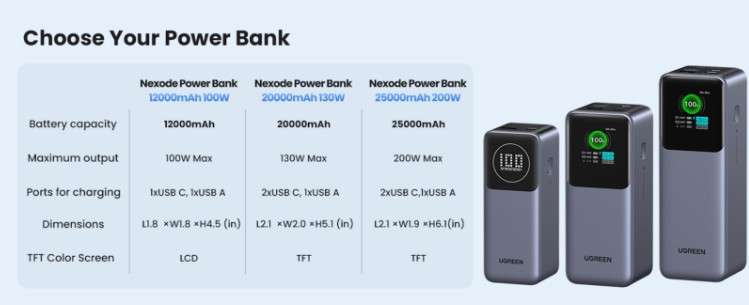How to Check if a Power Bank Is Safe

A power bank is a handy tool that keeps your devices running through the day—at home, at work, or while traveling. But not all power banks are built safely. A poorly made one can overheat, damage your phone, or even catch fire. That’s why safety matters as much as size or capacity.

Check for Power Bank Safety Certifications First
Before using a power bank—or even buying one—it’s smart to look for safety marks. These marks show that the product passed some kind of lab test and meets certain safety rules.
Common Safety Labels to Look For
Look for labels like CE, FCC, UL, or RoHS printed on the back of the power bank or on its packaging. These are signs that the product meets safety standards in different regions. For example:
- CE: Approved for sale in the EU
- FCC: Meets rules for electronic products in the U.S.
- UL: Tested by a trusted safety company
- RoHS: Limits harmful materials like lead or mercury
If none of these marks are present—or if the printing looks blurry, cheap, or suspicious—that’s a warning sign. Some unsafe products may copy logos to seem more trustworthy, but real brands usually show certification info clearly and confidently.
Watch for Missing or Fake Labels
If you only see random letters or symbols that don’t match known certifications, the power bank might be risky. A real safety label should match the name of the testing group and come with a registration or batch number.
Inspect the Power Bank’s Build Quality
Once you’ve checked the labels, take a good look at how the power bank feels and holds up in your hands. A poorly built power bank is more likely to fail or overheat.
Good Build: What to Expect
A safe power bank should feel solid. It shouldn’t rattle or make noise when you shake it gently. The casing should be smooth, with no loose buttons or gaps in the seams. The charging ports should fit snugly, not wobble.
Materials matter too. A sturdy plastic or metal case does a better job resisting impact and heat. Some power banks also include a soft rubber coating or reinforced corners to help with drops.
Poor Build: Signs of Trouble
If the plastic feels thin or bends under pressure, the battery inside may not be well protected. If it smells strange (like burning plastic), that’s a red flag. And if the ports are crooked or flimsy, the inside wiring may not be safe either.
These signs often show up in very cheap products or knockoffs sold without clear branding.
Understand the Power Bank’s Battery Specs and Output Limits
A safe power bank must match your device’s needs—not just in shape or plug type, but in power level. Pushing too much or too little power can damage both the bank and the phone.
Battery Capacity and Safety Limits
Most people buy power banks based on capacity, shown in mAh (milliamp hours). A normal range for phones is 5,000mAh to 10,000mAh. Larger ones, like 20,000mAh and above, are made for tablets or laptops. Click to read more: is 10000mah power bank good.

But very high numbers—like 50,000mAh—are sometimes fake. If the brand is unknown and the price is low, the actual battery inside might be weaker or poorly built.
Stick with a brand that clearly lists battery specs, including Wh (watt-hours), especially if you want to bring it on a plane. Airlines typically allow power banks under 100Wh in carry-on bags.
Charging Output and Voltage Ratings
Check the voltage and current listed near the USB ports. For phones, 5V/2A is common. Some fast-charging models support 9V or 12V. If the output doesn’t match your phone’s needs, charging may be slow—or it could overheat.
Also look for terms like PD (Power Delivery) or QC (Quick Charge). These are smart charging features, but only work if both the power bank and phone support them.
Research the Brand and Read Product Reviews
A power bank’s reputation can tell you a lot about its safety. Well-known brands are more likely to follow safety rules, offer customer support, and respond to complaints, like UGREEN power bank.
What to Look for in a Brand
Check if the brand has a website, clear warranty info, and real customer service. A missing company name or a store page filled with typos is not a good sign.
Some top-selling brands post safety test details and have reviews across many stores, not just one site.
Read User Reviews Carefully
Go beyond the star rating. Look for specific reports of overheating, swelling, device damage, or early battery failure. If more than one person mentions the same issue, take it seriously.
Also watch for fake reviews. If every comment sounds the same, uses strange grammar, or only says “good product,” that could be a red flag.
Pay Attention to Charging Behavior and Heat
Even if the labels and reviews look fine, the real test is in how the power bank acts during use. A good one charges smoothly and stays cool. A bad one shows signs of trouble early on.
Normal Behavior
It’s normal for a power bank to get slightly warm while charging, especially with fast charging. But it should never feel hot to the touch. Your phone should charge at a steady pace without jumping around or disconnecting.
The battery indicator lights on the power bank should respond clearly—lighting up in order, not flashing randomly.
Warning Signs During Use
Stop using the power bank right away if you notice:
- Heat that feels too strong to hold
- Swelling or a soft/bulging case
- A burning smell or crackling sound
- Loose or flickering charging connections
These may be signs of a battery problem or an electrical fault inside. Keep it away from flammable materials and unplug it right away.
Advanced Users: Test with a Power Meter (Optional)
This step isn’t for everyone, but if you enjoy gadgets or want to double-check your power bank’s output, a USB power meter can help.
How to Use It Safely
These small tools show real-time voltage and current as your device charges. You plug the meter between the power bank and the cable. If the numbers don’t match the product label, or the current keeps dropping, the charger may not be stable.
Only test in a safe space, away from flammable items. If the meter shows anything unusual—like sharp jumps in power or long delays—stop using the power bank.
Key Takeaway
Safety isn’t just about how many times your phone can charge. A good power bank protects both you and your device.
Look for trusted labels, solid build, correct power output, and clean charging behavior. Stay away from unbranded, overly cheap, or strangely heavy models. And trust your gut—if something feels off, it probably is.
FAQs: Power Bank Safety Questions Answered
Q1: Are cheap power banks always unsafe?
Not always. But very cheap ones without clear labels or reviews are more likely to skip safety steps. Saving a few dollars isn’t worth the risk of a damaged phone—or worse.
Q2: Can I bring any power bank on a plane?
Most airlines let you carry power banks up to 100Wh in your hand luggage. That’s about 27,000mAh. Anything above that might be denied at the gate. Always check your airline’s rules.
Q3: Is it normal for a power bank to feel warm?
Yes, a little warmth is normal, especially with fast charging. But it should never feel hot, smell odd, or swell. If it does, stop using it.
Q4: Can safety labels be faked?
Yes. Some knockoff brands print fake UL or CE marks. Stick with trusted sellers and look up the brand or label online if you’re unsure.
Q5: What should I do with a damaged or swollen power bank?
Stop using it right away. Don’t throw it in the trash. Most electronics stores or recycling centers take old or damaged batteries. Keep it in a cool, dry place until you can dispose of it properly.



